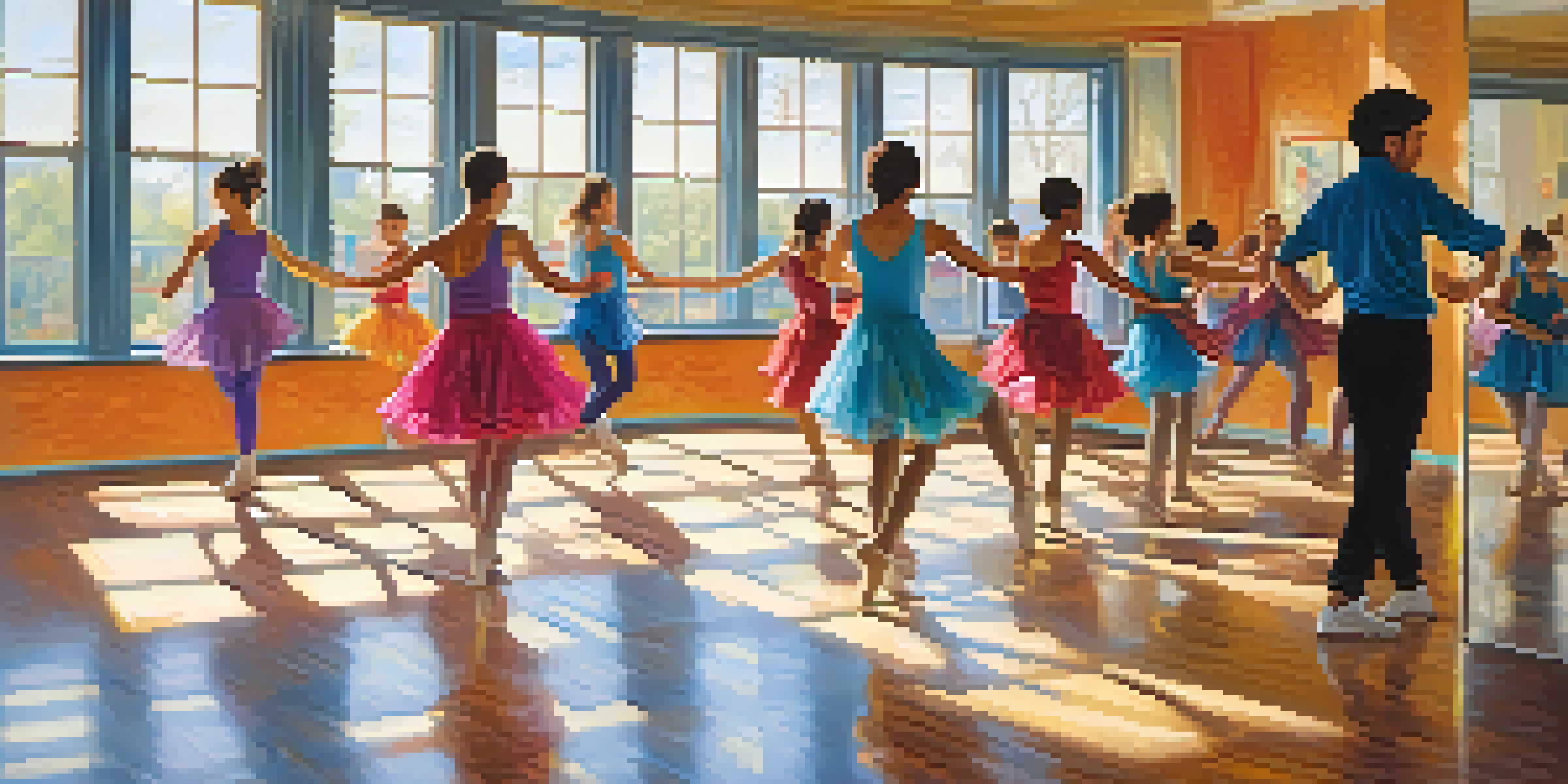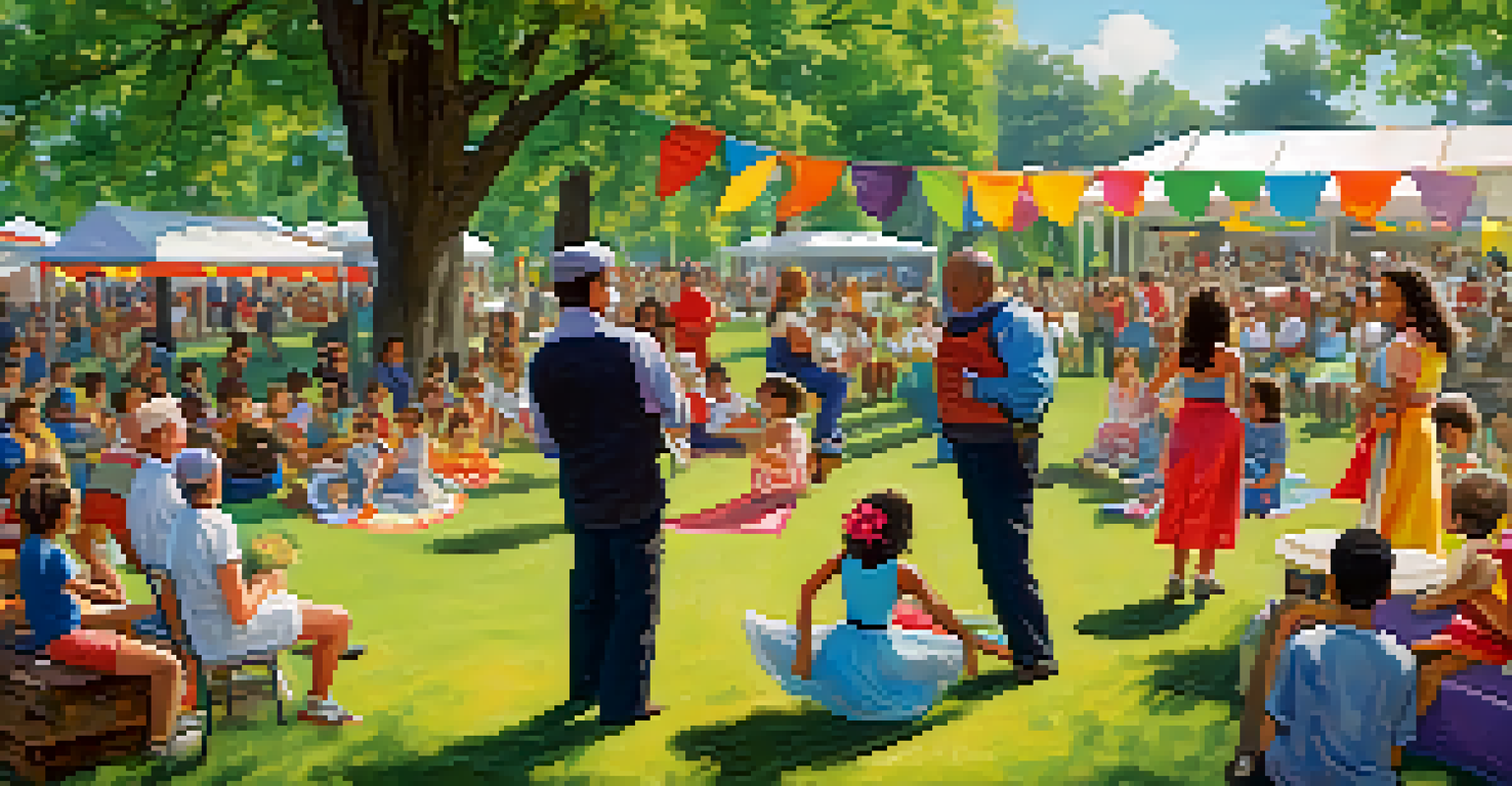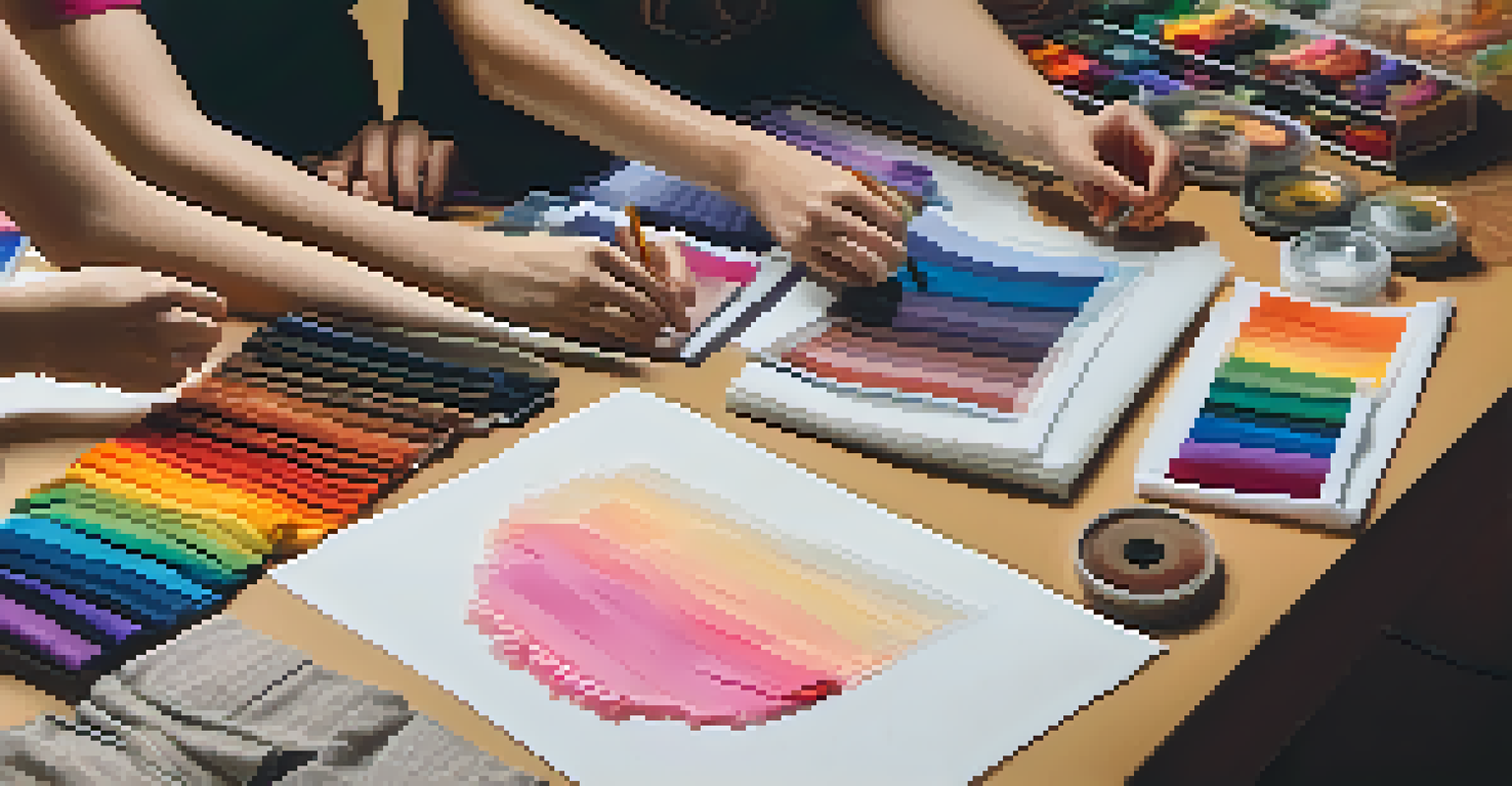Dance Programs in Schools: Engaging Families and Communities

The Importance of Dance Programs in Education
Dance programs in schools provide students with a unique outlet for expression and creativity. These programs not only enhance physical fitness but also encourage emotional and social development. By integrating dance into the curriculum, schools can create a more holistic educational experience that fosters collaboration and teamwork.
Dance is the hidden language of the soul.
Moreover, dance can serve as a bridge for students from diverse backgrounds to connect with one another. When students participate in dance, they learn to appreciate different cultures and traditions, promoting inclusivity and understanding. This cultural exchange enriches the school community and prepares students for a global society.
Ultimately, dance education contributes to a well-rounded development that includes cognitive, social, and emotional growth. It helps students develop confidence, discipline, and resilience, skills that are invaluable in both academic and personal pursuits.
Building Community Through Dance Events
Dance events, such as recitals and showcases, are an excellent way to bring families and the community together. These events not only celebrate student achievements but also create a sense of belonging among attendees. When families gather to support their children, they strengthen ties within the community and foster a shared sense of pride.

In addition to showcasing talent, these events often feature opportunities for parents and community members to participate. Workshops, dance classes, and open rehearsals can engage families in the creative process, making them feel more connected to the school and its programs. This involvement can lead to increased support for the arts in education.
Dance Enhances Student Development
Dance programs foster physical, emotional, and social growth, contributing to a well-rounded educational experience.
Furthermore, these community dance events can highlight local culture and traditions, inviting local artists and performers to participate. By celebrating local talent, schools can enhance their role as community hubs, bridging the gap between education and the broader community.
Engaging Families in Dance Education
Engaging families in dance education is essential for the success of any program. Schools can facilitate family involvement through workshops that allow parents to learn and participate alongside their children. This shared experience not only strengthens family bonds but also fosters a positive attitude toward education and the arts.
Education is not preparation for life; education is life itself.
Another effective approach is to provide regular updates and communications about the dance program's activities and achievements. By keeping families informed, schools can encourage greater participation and investment in the program. This transparency helps families feel more connected and valued within the school community.
Additionally, schools can create volunteer opportunities for parents and family members to support dance events and activities. Whether helping with costumes, organizing events, or participating in fundraising efforts, these roles can deepen family engagement and create a more vibrant school culture.
The Role of Dance in Social-Emotional Learning
Dance programs play a crucial role in social-emotional learning (SEL) by helping students develop essential life skills. Through dance, students learn to express their emotions, collaborate with peers, and build self-awareness. These skills are vital not only in the classroom but also in everyday life.
Moreover, dance provides a safe space for students to explore their identities and emotions. This exploration can lead to increased empathy and understanding among peers, as students learn to appreciate diverse perspectives through movement. As a result, the school environment becomes more supportive and nurturing.
Community Engagement Through Dance
Dance events unite families and the community, celebrating student achievements and encouraging participation.
By incorporating SEL into dance education, schools can create a foundation for positive mental health. Students who feel emotionally supported are more likely to engage actively in their education, leading to better academic outcomes and overall well-being.
Promoting Inclusivity Through Dance Programs
Inclusivity is a vital component of successful dance programs in schools. By providing opportunities for all students, regardless of ability or background, schools can create an environment where everyone feels valued. This inclusivity helps to break down barriers and encourages participation from diverse groups.
Adaptive dance programs, for example, allow students with disabilities to engage in dance education. These programs not only empower students but also educate their peers about diversity and inclusion. By participating together, students learn to appreciate each other's strengths and challenges.
Furthermore, culturally responsive dance education that respects and incorporates various cultural backgrounds can promote a sense of belonging. Celebrating different styles and traditions in dance fosters respect and understanding among students, creating a more harmonious school community.
Funding and Support for Dance Programs
Securing funding and support for dance programs is essential for their sustainability. Schools can explore various funding sources, including grants, partnerships with local arts organizations, and community sponsorships. By diversifying funding streams, schools can ensure that their dance programs remain accessible and robust.
Moreover, engaging families and community members in fundraising efforts can create a sense of ownership and investment in the program. When families contribute their time or resources, they feel more connected to the program and are likely to advocate for its continuation and growth.
Inclusivity in Dance Education
Promoting inclusivity in dance programs allows all students to feel valued and fosters respect for diverse backgrounds.
Additionally, schools should prioritize communication with local government and arts organizations to build lasting partnerships. These collaborations can provide invaluable resources, expertise, and support, enhancing the overall quality of dance education in schools.
The Future of Dance Programs in Schools
As we look to the future, dance programs in schools must continue to evolve and adapt to meet the needs of students and communities. Embracing technology, such as online classes and virtual performances, can expand access to dance education. This flexibility can help engage students who may not have participated otherwise.
Furthermore, schools should continue to prioritize partnerships with local artists and organizations to enrich their dance programs. Collaborations can introduce students to new styles and techniques, broadening their horizons and enhancing their learning experience.

Ultimately, the future of dance programs in schools lies in their ability to foster creativity, community, and inclusivity. By prioritizing these values, schools can ensure that dance remains a vital part of the educational landscape for generations to come.